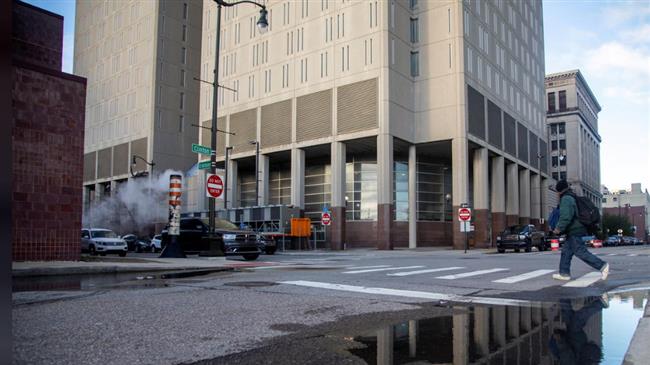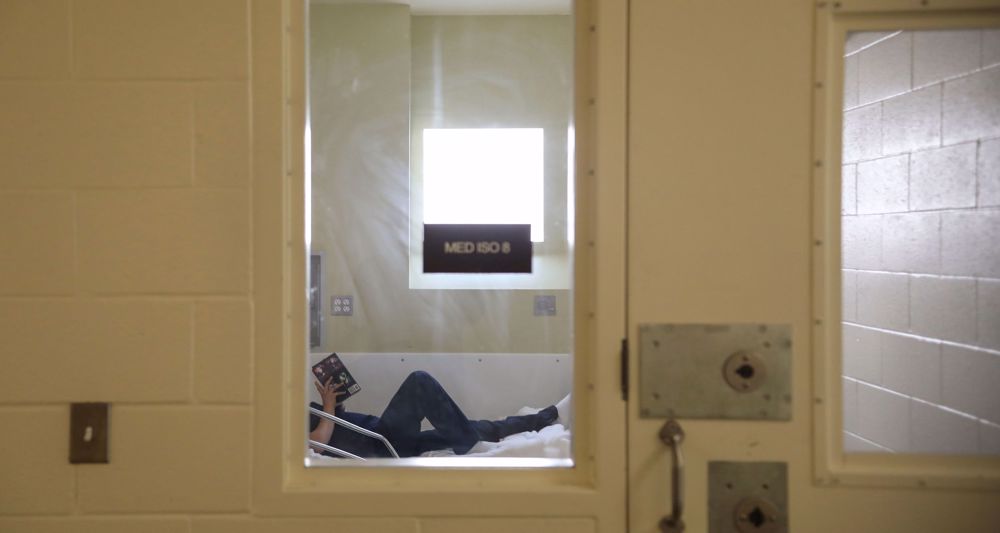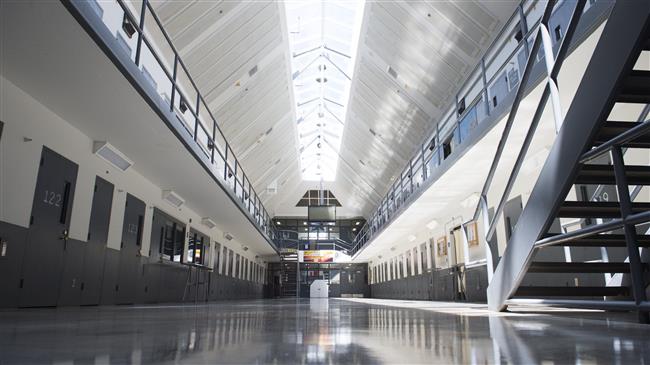One in every 5 US prisoners has tested positive for COVID-19
One in every five state and federal prisoners in the United States has tested positive for the coronavirus, a rate more than four times as high as the general population. In some states, more than half of prisoners have been infected, according to data collected by the Associated Press and the Marshall Project.
As the pandemic enters its 10th month, and as the first Americans begin to receive a long-awaited Covid-19 vaccine, at least 275,000 prisoners have been infected, more than 1,700 have died and the spread of the virus behind bars shows no sign of slowing. New cases in prisons this week reached their highest level since testing began in the spring.
“That number is a vast undercount,” said Homer Venters, the former chief medical officer at New York’s Rikers Island jail complex.
Venters has conducted more than a dozen court-ordered Covid-19 prison inspections around the country. “I still encounter prisons and jails where, when people get sick, not only are they not tested but they don’t receive care. So they get much sicker than need be,” he said.
As the virus spreads largely unchecked behind bars, prisoners can’t social distance and are dependent on the state for their safety and well-being.
Donte Westmoreland, 26, was recently released from Lansing correctional facility in Kansas, where he caught the virus while serving time on a marijuana charge. About 5,100 prisoners have become infected in Kansas prisons, the third-highest Covid-19 rate in the country, behind only South Dakota and Arkansas. “It was like I was sentenced to death,” Westmoreland said.
Westmoreland lived with more than 100 virus-infected men in an open dorm, where he woke up regularly to find men sick on the floor, unable to get up on their own, he said. “People are actually dying in front of me off of this virus,” he said. Westmoreland said he sweated it out, shivering in his bunk until, six weeks later, he finally recovered.
Half of the prisoners in Kansas have been infected with Covid-19, eight times the rate of cases among the state’s overall population. Eleven prisoners have died, including five at the prison where Westmoreland was held. Of the three prison employees who have died in Kansas, two worked at Lansing correctional facility.
In Arkansas, where more than 9,700 prisoners have tested positive and 50 have died, four of every seven have had the virus. Among the dead was 29-year-old Derick Coley, who was serving a 20-year sentence at the Cummins Unit maximum security prison. Cece Tate, Coley’s girlfriend, said she last talked with him on 10 April when he said he was sick and showing symptoms of the virus.
“It took forever for me to get information,” she said. The prison finally told her on 20 April that Coley had tested positive for the virus. Less than two weeks later, a prison chaplain called to tell her Coley had died. The couple had a daughter who turned 9 in July. “She cried and was like, ‘My daddy can’t send me a birthday card,’” Tate said. “She was like, ‘Momma, my Christmas ain’t going to be the same.’”
Nearly every prison system in the country has seen infection rates significantly higher than the communities around them. In facilities run by the federal Bureau of Prisons, one of every five prisoners has had coronavirus. Twenty-four state prison systems have had even higher rates.
Prison workers have also been disproportionately affected. In North Dakota, four of every five prison staff has gotten coronavirus. Nationwide, it’s one in five.
Not all states release how many prisoners they have tested, but states that test prisoners broadly and regularly may appear to have higher case rates than states that don’t.
Infection rates as of Tuesday were calculated based on data collected weekly in prisons since March. Infection and mortality rates may be even higher, since nearly every prison system has significantly fewer prisoners today than when the pandemic began, so rates represent a conservative estimate based on the largest known population.
Yet, as vaccine campaigns get under way, there has been pushback in some states against giving the shots to people in prisons early. “There’s no way it’s going to go to prisoners ... before it goes to the people who haven’t committed any crime,” the Colorado governor, Jared Polis, said earlier this month.
Like more than a dozen states, Kansas’s vaccination plan does not mention prisoners or corrections staff, according to the Prison Policy Initiative, a non-partisan prison data thinktank. Seven states put prisoners near the front of the line, along with others living in crowded settings like nursing homes and long-term care facilities. An additional 19 states have placed prisoners in the second phase of their vaccine rollouts.
Racial disparities in the nation’s criminal justice system compound the disproportionate toll the pandemic has taken on communities of color. Black Americans are incarcerated at five times the rate of white Americans. They are also disproportionately likely to be infected and hospitalized with Covid-19, and are more likely than other races to have a family member or close friend who has died of the virus.
Prison facilities are often overcrowded and poorly ventilated. Dormitory-style housing, cafeterias and open-bar cell doors make it nearly impossible to quarantine. Prison populations are sicker, on average, than the general population and healthcare behind bars is notoriously substandard. Nationwide, the mortality rate for Covid-19 among prisoners is 45% higher than the overall rate.
From the earliest days of the pandemic, public health experts called for the release of medically vulnerable prisoners, people nearing the end of their sentence or who pose a low risk to public safety as the best way to curb virus spread behind bars.
But releases have been slow and uneven. In the first three months of the pandemic, more than 10,000 federal prisoners applied for compassionate release. Wardens denied or did not respond to almost all those requests, approving only 156, less than 2%.
Prison walls are porous even during a pandemic, with corrections officers and other employees traveling in and out each day. “The interchange between communities and prisons and jails has always been there, but in the context of Covid-19 it’s never been more clear,” said Lauren Brinkley-Rubinstein, a professor of social medicine at UNC-Chapel Hill. “We have to stop thinking about them as a place apart.”
(Source: AP)
Baby dies of cold as winter hits displaced Gazans amid Israeli attacks
Nuclear chief: Iran should turn from buyer to creator of technology
Swiss MPs urge revocation of UEFA tax-exemption over Israel ties
'No war on Venezuela' demonstration in US
Pezeshkian hails ‘decisive step’ in ties as Iran, Kazakhstan seal 7 deals
VIDEO | India faces new political clash over patriotic song
VIDEO | Press TV's news headlines
Iran returns to IOC leadership after 21 years as Olympian Soraya Aghaei wins seat
















 This makes it easy to access the Press TV website
This makes it easy to access the Press TV website